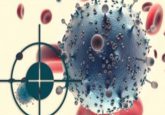Structure of regulatory HIF proteins uncovered, increasing potential for drug development

Through the use of highly specialized x-ray crystallography, researchers have uncovered the protein structure of hypoxia-inducible factors (HIFs). The results, published recently in the journal Nature, could pave the way for the development of cancer treatments that starve tumors of oxygen and nutrients.
“For the first time, we have solved the structures of both HIF1-alpha and HIF2-alpha complexed with the ARNT subunit, a configuration required for HIF functionality,” commented investigator Fraydoon Rastinejad (Sanford Burnham Prebys Medical Discovery Institute, FL, USA). “Visualizing these multidomain structures helps us understand their drug-binding capabilities and takes us further toward the goal of developing drugs that inhibit the tumor-promoting effects of HIFs.”
HIFs are important regulators of hypoxia and contribute to the progression of a variety of tumors. Modulating the activity of HIFs is recognized as a promising avenue for cancer therapy but, thus far, efforts have only produced drug candidates that bind to prolyl-hydroxylases (PHDs) – another class of proteins that regulate HIFs. Several PHD inhibitors are currently in clinical trials for stroke, anemia, chronic kidney disease and cancer.
“This study advances efforts to find new drugs that bind to HIF directly, rather than PHDs. We identified five different pockets in the architecture of the HIF complexes, all of which may be used for targeting small-molecule inhibitors. These drugs could conceivably inhibit HIF functions by reducing their stability, their ability to interact with other protein partners, and by altering mechanisms critical for their function,” Rastinejad explained.
HIFs are key to the survival of solid tumors that outgrow their blood supply and become hypoxic, as they activate genes regulating cancer processes such as angiogenesis, erythropoiesis, increased anaerobic metabolism and metastasis. The coordination of these pathways promotes tumor growth and drug resistance, and thus inhibiting HIFs could have a significant impact on patient survival.
“Our next step is to analyze a large number of patient samples with mutations in HIF proteins. We’d like to see where on the protein architectures these mutations occur, and how they manifest into HIF functional aberrations. Such mutations will offer a powerful glimpse into the structure-function activities of HIFs, and help us figure out how they turn genes on and off,” concluded Rastinejad. “The insights we make into the structure, function, and regulation of HIFs may also progress the development of treatments for a range of disease states beyond cancer, including heart disease, fatty liver, diabetes, and inflammatory diseases.”
Source: Sanford Burnham Prebys Medical Discovery Institute press release





